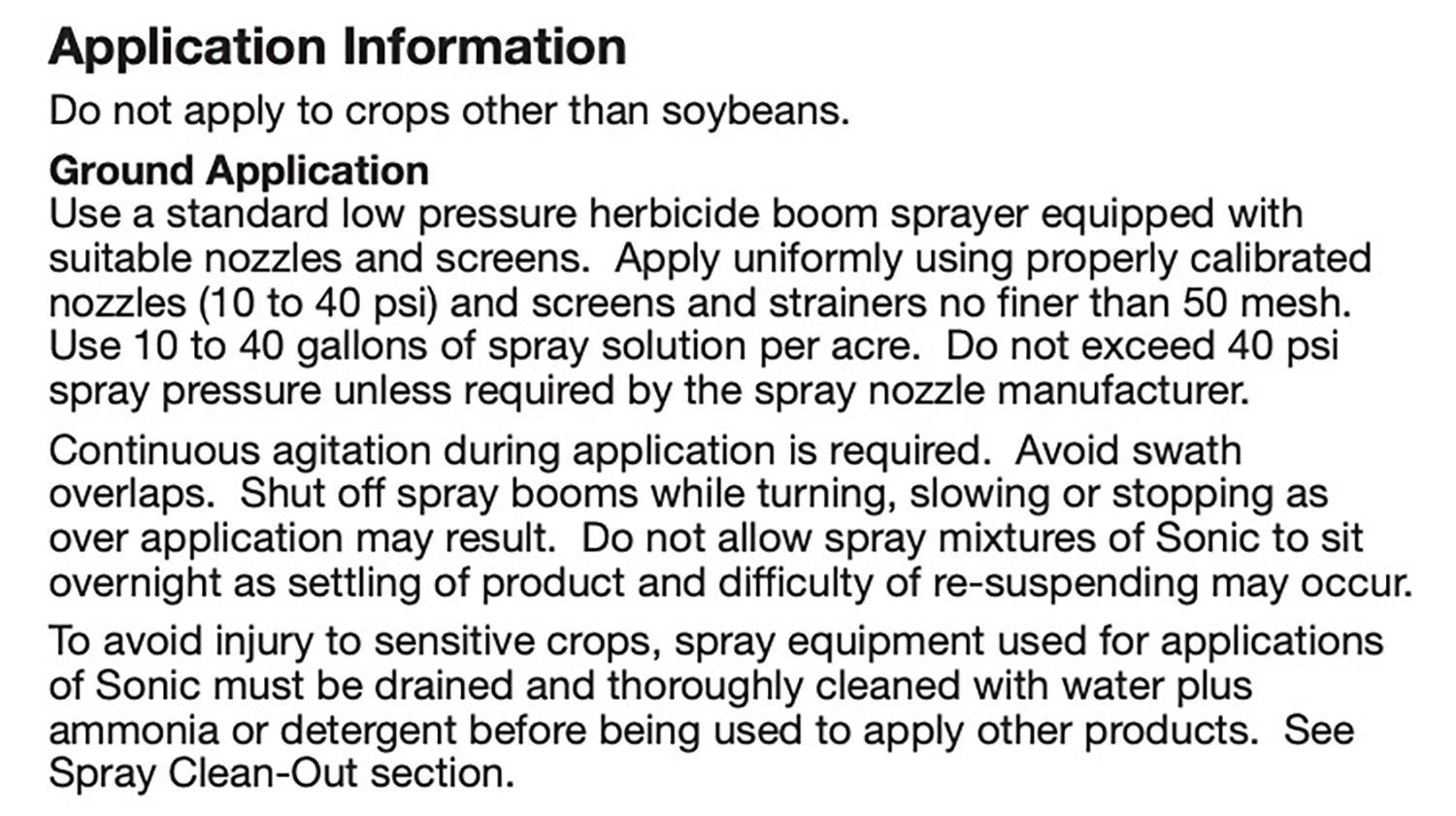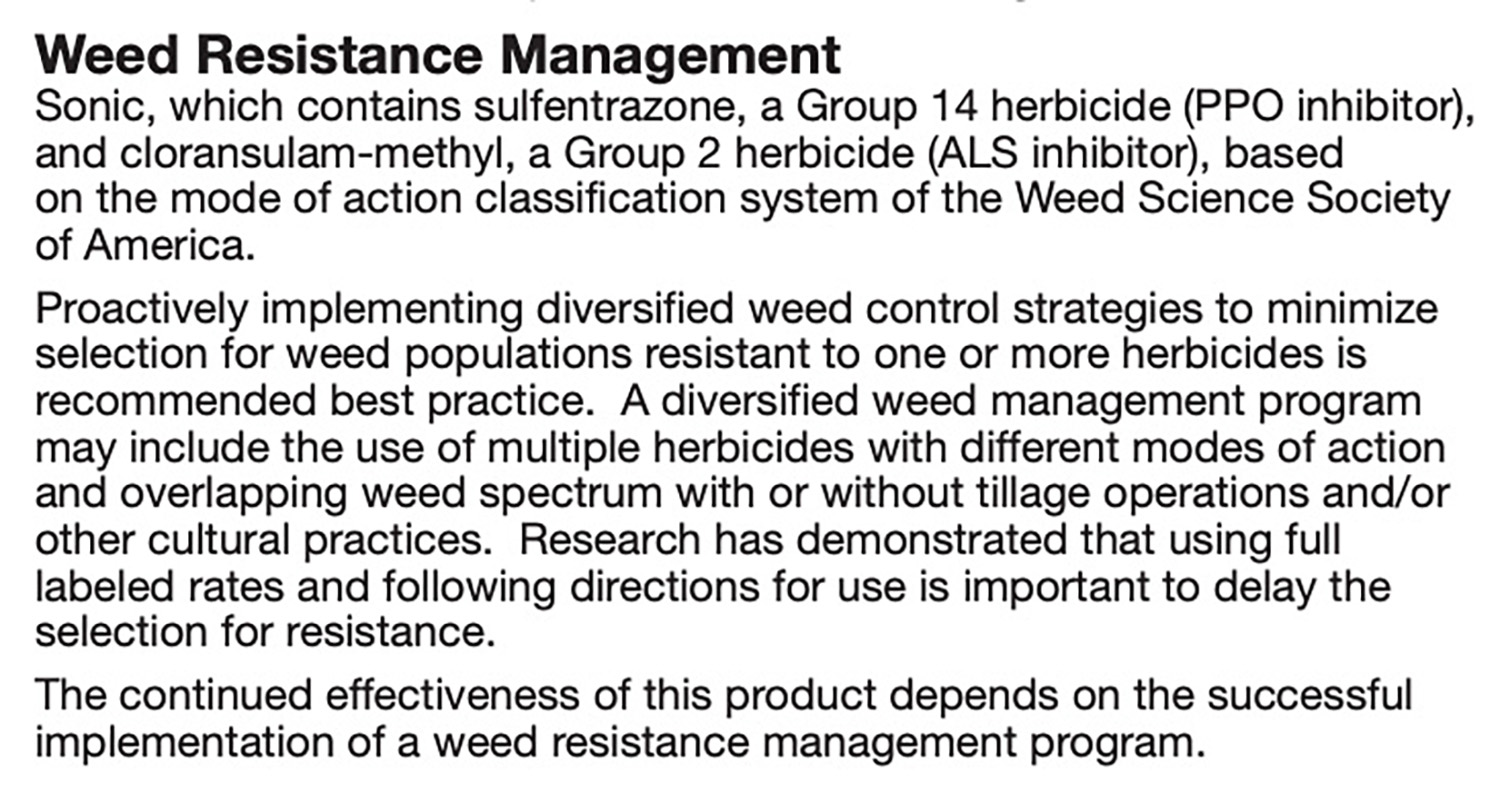Get the Info You Need From
Herbicide Labels

When planning your weed control program or preparing for an application, the labels for the herbicides you use can be a wealth of useful information. From helping protect you both physically and legally to ensuring you get the best performance out of the products, the label is the go-to resource for all these details.
However, herbicide labels can be tedious to read through. They are full of legal language, after all. We have a quick refresher on what to look for within that language to help you make the most of these resources.
To start, let’s go back to the basics and review what, exactly, a herbicide label is.
“A label is a legal document providing important information about the appropriate use and precautions needed to protect the applicator, the crop, the environment and avoid damaging sensitive nearby crops,” says Chris McClain a market development specialist for Corteva Agriscience in the Midsouth region. “It gives farmers the what, when, where and how to control weeds and keep them within the law of applying those herbicides by helping them avoid violations of any laws that are attached to those labels.”
Depending on the product, it will have a federal label from the Environmental Protection Agency (EPA), and may have special, separate labels from individual states and other jurisdictions. This article features images from the Sonic® herbicide EPA label. Sonic is a preemergence soybean herbicide solution with two powerful modes of action,.
When it comes to herbicide labels, McClain says there are several categories of information you will find on them. The layout and order of categories may change depending on the product, but he says the following are what you can generally expect to see:
This list doesn’t cover every single item on a herbicide label but gives a good overview. McClain says it’s a lot of information and it may be tempting to skim or even ignore parts, but he says it really is important to read through the label thoroughly.
“Most growers have been farming quite a while, but they may skip over some of those environmental hazards or the PPE that’s required. But they have guidelines for a reason,” says McClain. “They’re there to keep you safe when handling and applying those products.”
He says it’s especially important to give the labels of new products a close inspection. If you haven’t used it before, go over the information before it’s time for applications.
“Several things can go wrong if farmers don’t pay close attention to herbicide labels. They can put themselves or their farms at risk for potential lawsuits if there’s misapplication and the herbicides drift to other crops or property. They could potentially cause injury to their current or future crop,” says McClain. “They could also cause injury to themselves if they aren’t careful. Luckily, most farmers are careful and do pay close attention to these labels, but it helps to have a reminder now and then.”
Even though the safety guidelines are the most important aspects of a herbicide label, McClain says there are also some sections that offer very useful tips and reminders to help you No. 1 get the best weed control possible out of that specific product and No. 2 help prevent herbicide resistance on your farm in future seasons.
To get the best weed control, knowing the information like the active ingredient(s), group number(s) and weeds controlled are all obviously very important to ensuring the right program. However, McClain says, a label also contains further details about each weed controlled like specific use rates at which the product will most effectively control each labelled species.
The label will also offer detailed instructions for sprayer prep, tank-mixing, sprayer cleanout and what types of adjuvants should be mixed with the herbicide. Part of the application section of the Sonic label is shown below.

An extended label will show a full list of tank-mix partners for each product, but this is a good place to start. McClain says all this information combined can help ensure smooth applications and that you’re controlling the weeds you need to control.
He says herbicide labels also offer helpful reminders about herbicide resistance prevention and mitigation. Part of the herbicide resistance section of the Sonic label is shown below.

McClain says taking measures to manage herbicide resistance helps extend the life of the modes of action we currently have available and will set you up for more successful weed control – and higher yield potential – in the future.
“One important thing you’ll want to remember is that, if you’re going to tank-mix several products together, you need to read the label for each of those products to make sure they work together and that you’re meeting all the application requirements,” says McClain.
You can find herbicide labels in several places. The first is with the product packaging. You can also get them from online databases. Finally, all the Corteva Agriscience product labels are available on Corteva.us.
McClain advises talking through any questions you have about specific labels with your local ag retailer or independent crop consultant. Your local Corteva crop protection representative is another great resource to help you make the best use of that information.
Sonic® is not registered for sale or use in all states. Contact your state pesticide regulatory agency to determine if a product is registered for sale or use in your state. Consult the label before purchase or use for full details. Always read and follow label directions.
Find expert insights on agronomics, crop protection, farm operations and more.